Dataset Management
The dataset list has two styles: the default card style and the list style.
Dataset Display
Card Style

List Style
Click the list button to switch to the list style. In the list style, Access Popularity and Last Access Time are also provided to help users understand the access status of resources and to clean up resources that have not been accessed for a long time.
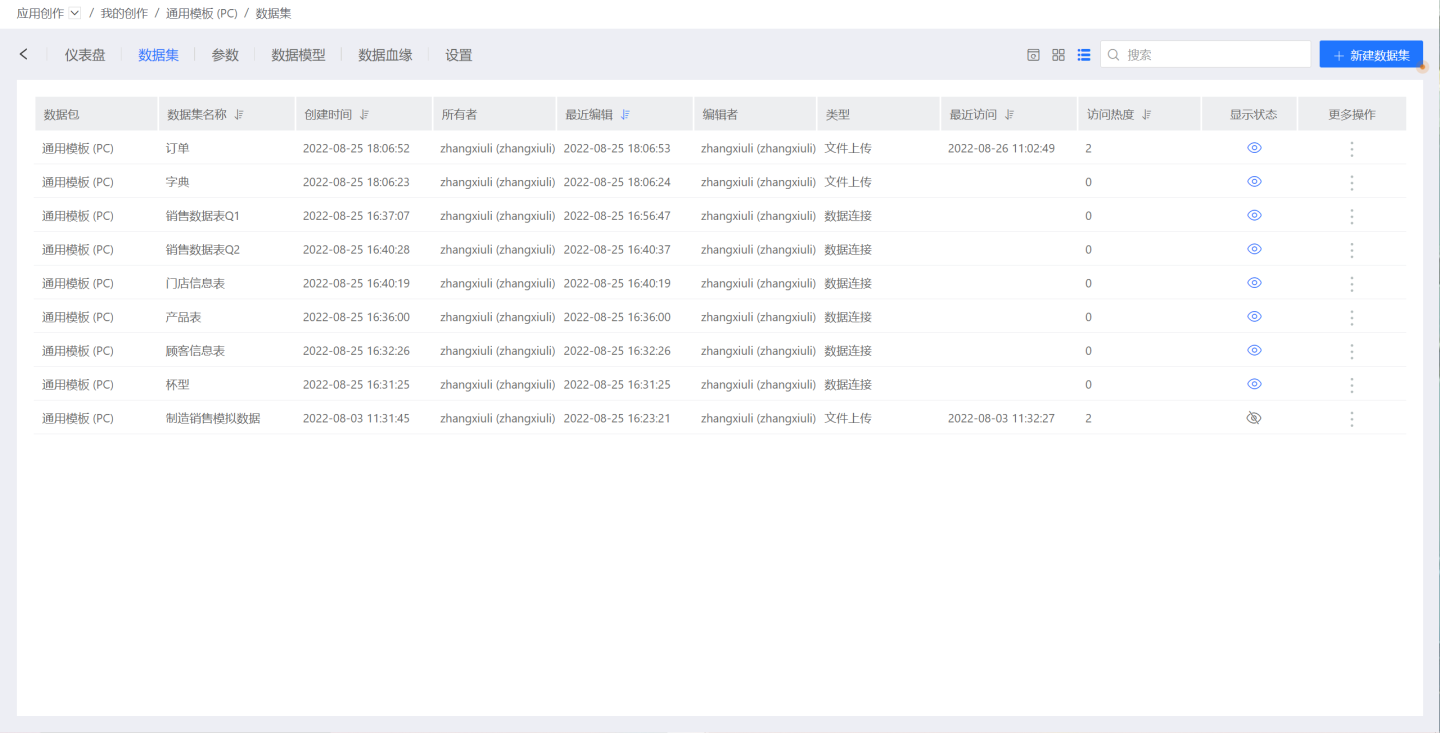
Sorting
The dataset list is sorted by modification time in descending order by default.
In the list style, you can click the table header columns to sort, such as sorting by Access Popularity in the image below:
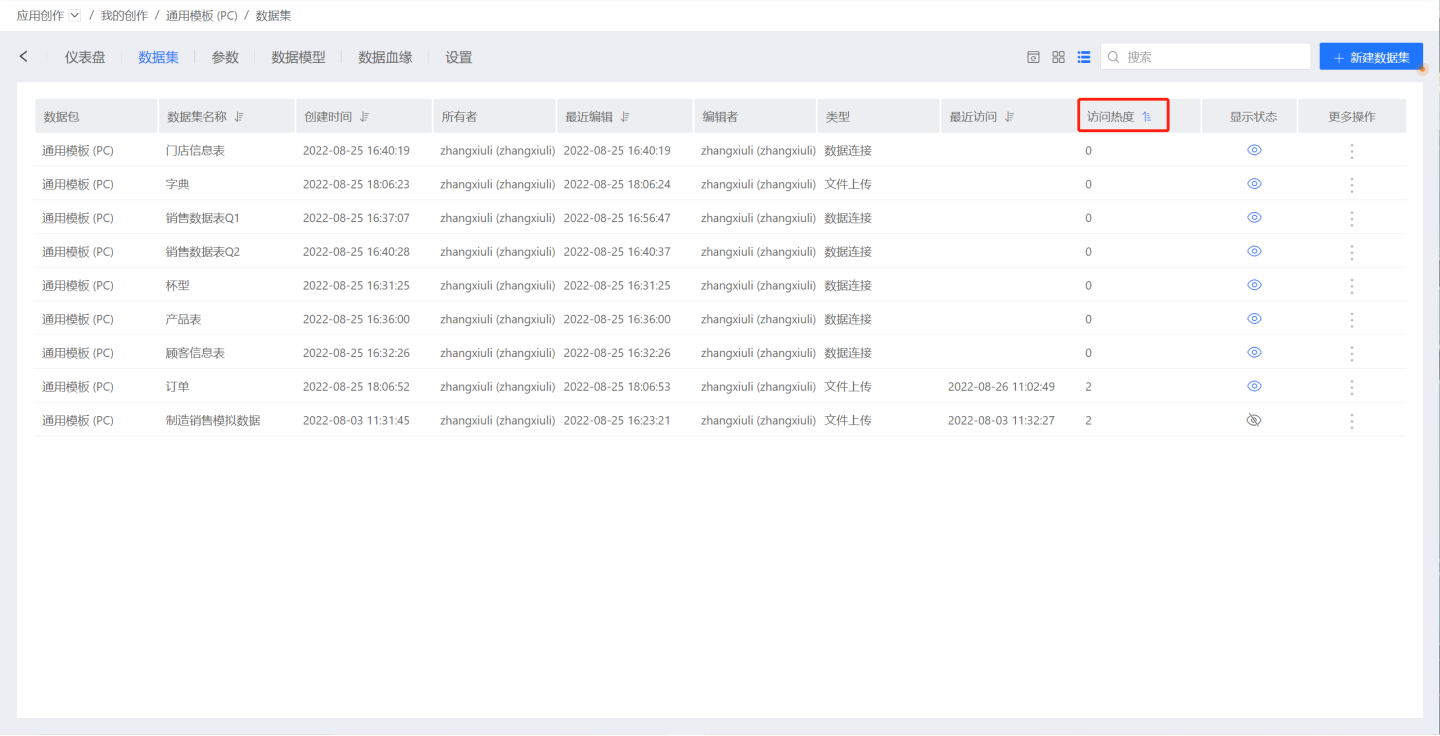
Search
Enter characters in the search box to search for datasets.
Dataset Operations
Click the three-dot menu of the dataset to see common operations, including delete, rename, create a copy, replace dataset, hide, and show.

Create New Dataset
Create Blank Dataset
Click the New Dataset button in the upper right corner to create a dataset. See Create Dataset for details.
Import Dataset
Click the New Dataset button in the upper right corner, and select Import Dataset from the dropdown menu. You can import datasets from other applications or data packages.
Tip
- Only local files, data connections, and SQL query datasets support this function, so not all datasets in the application may be listed for import.
- After importing the dataset, the dataset indicators and related data models will not be imported into the new application.
- When the data permission of the application is set to Consumer, datasets with the acceleration engine enabled cannot be imported.
- You can import one or multiple datasets from the application.
Delete
When deleting a dataset, if the dataset is referenced by a model or chart, it cannot be deleted, only unreferenced datasets can be deleted.
Rename
You can rename the dataset to better align with business logic.
Create Copy
Create a copy of the dataset, generating a new dataset.
Copy To
Copy To allows you to copy the dataset to other applications or data packages, enabling cross-application reuse of datasets.
Tip
- Only local files, data connections, and SQL query datasets support this function, other datasets do not support it.
- When copying the dataset to another application, the dataset indicators and related data models will not be copied.
- When copying a dataset with the engine enabled to another application, the data permission of the application must be set to the application author or dataset author mode.
Replace Dataset
Replace the dataset. See Replace Dataset for details.
Hide
After processing the dataset, some intermediate datasets may no longer be needed for charting, so you can hide these datasets. Hidden datasets can still participate in model associations or dataset processing, but they will not be visible on the dashboard and chart pages.
After hiding the dataset, the hide function in the three-dot menu changes to show, and you can click show to set the dataset to visible.
Set as Default Dataset
The system supports setting a dataset as the default dataset. During chart creation, the default dataset in the data package will be displayed, reducing the need to switch and search for datasets.
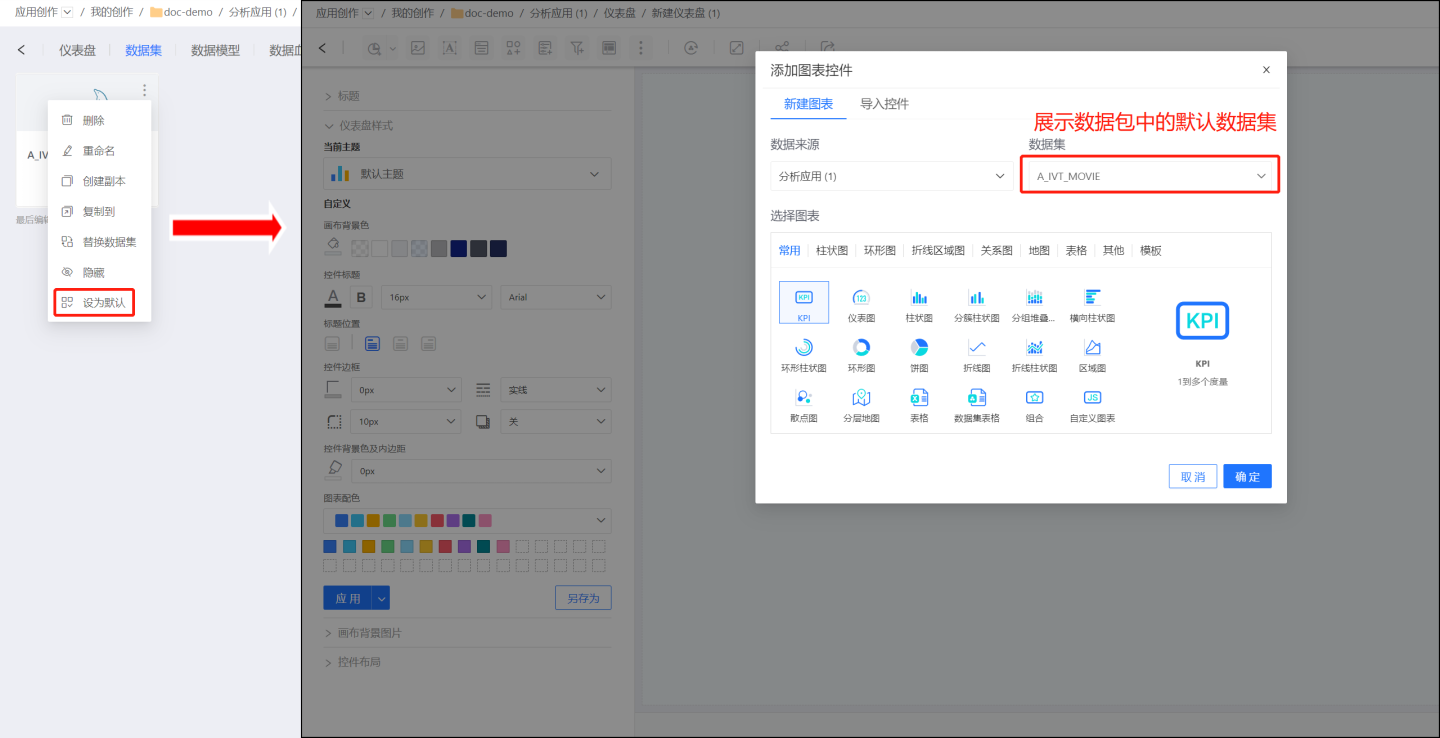
Dataset Management
An important task beyond data exploration is data preprocessing. In the system, the dataset management page is where this function is implemented. Click on a dataset to open it. Here is a two-dimensional table structure showing the data of the dataset, with the following operations in the header.
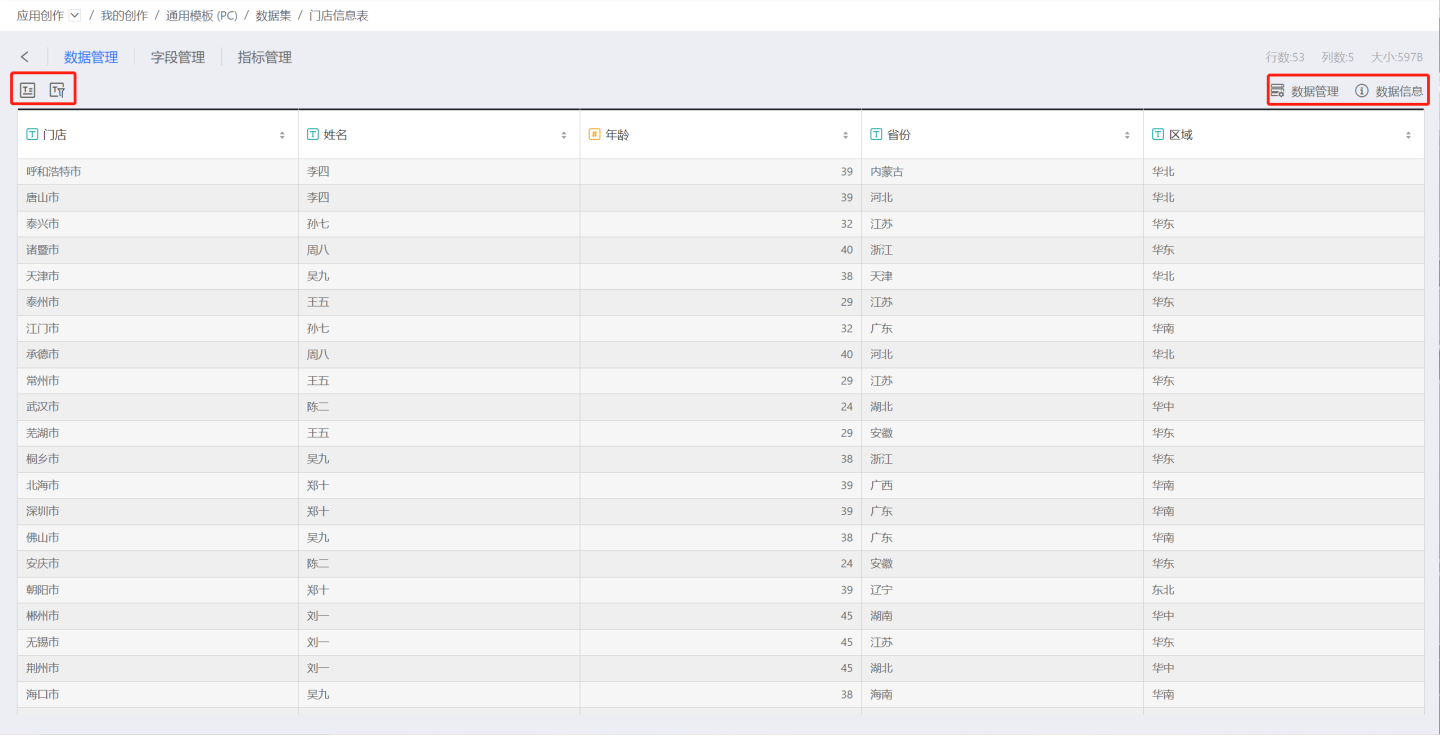
Field Selection
Click the Field Selection icon to pop up the field selection list, select the fields of interest, and then click Apply. The dataset page will display the data of the selected fields.
Field selection is temporary, and refreshing the page will clear the selected items.
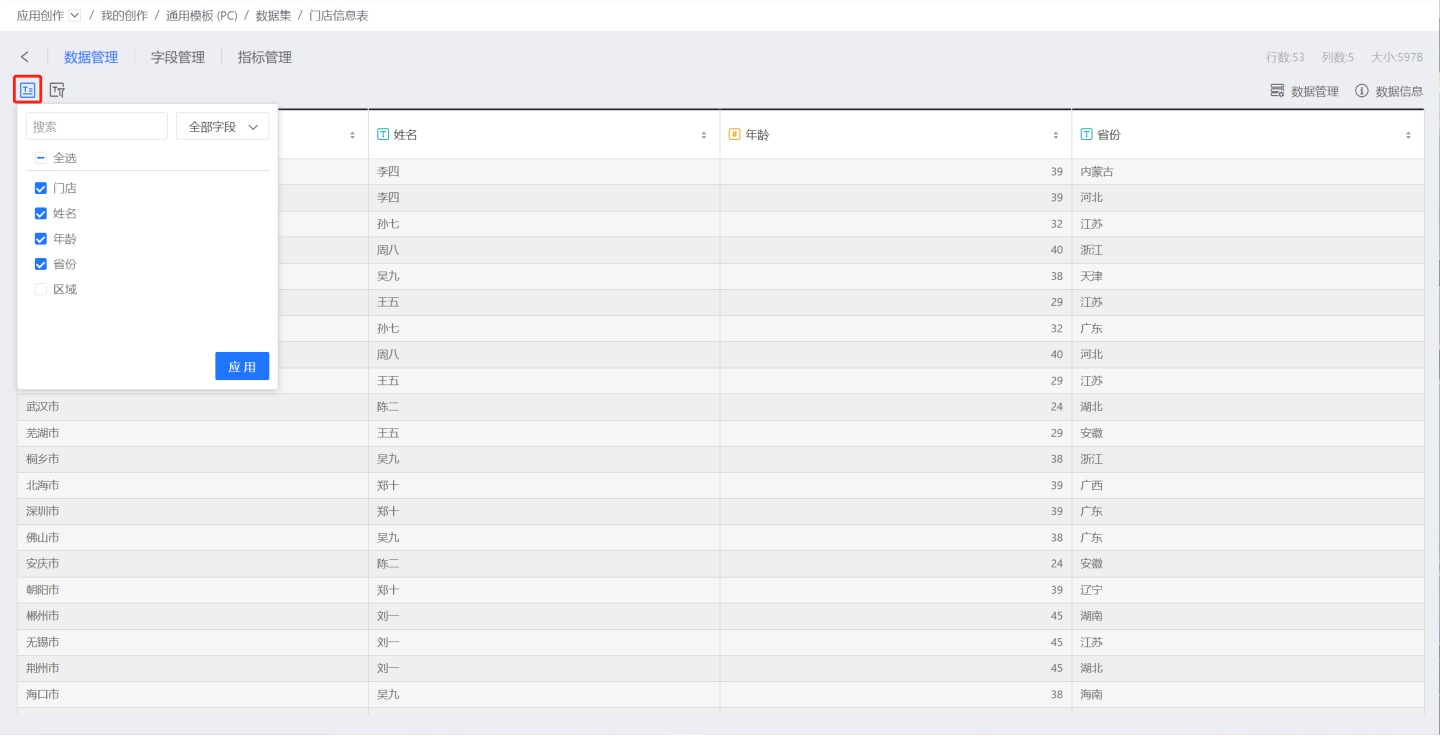
Filter Data
Click the Filter Data icon to pop up the data filtering window, add filtering conditions in the window, and then click OK to apply. Data filtering is also temporary, and refreshing the page will clear the selected items.
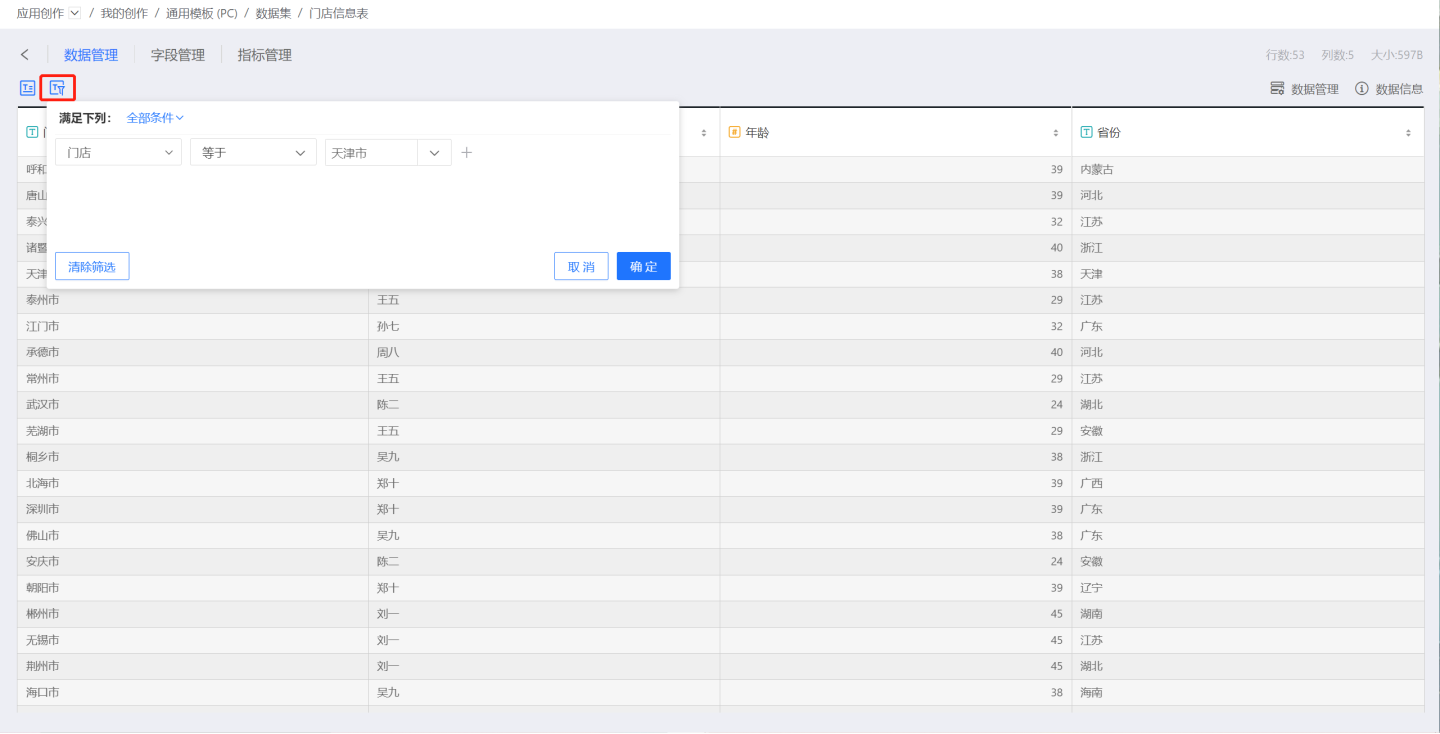
Data Management
In data management, you can perform operations such as appending datasets, appending local files, editing datasets, and exporting data.
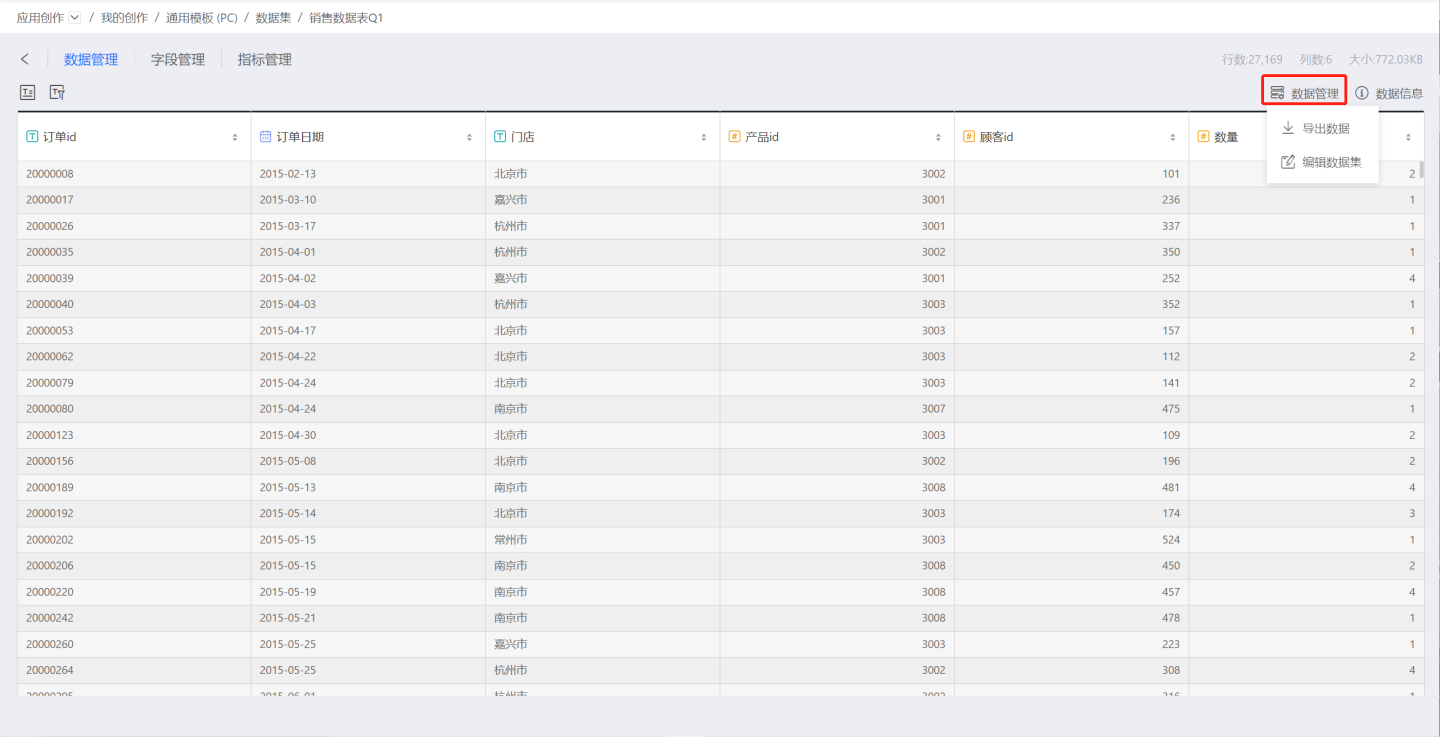
Append Dataset
For datasets imported into the engine, there is an Append Dataset menu. See Dataset Append for details.
Append Local File
Only local file datasets have the Append Local File menu. See Append Local File for details.
Edit Dataset
For SQL query datasets, multi-table joint datasets, data aggregation datasets, and merged datasets, there is an Edit Dataset menu.
When editing the dataset, there is a reference check, and fields that are referenced elsewhere cannot be removed and must be retained.
Export Data
When the application is in creation mode, all dataset data can be exported.
Data Information
Data information displays the metadata, including:
- Dataset Name
- Dataset Type: Text indicates the source of the dataset: data connection, local file, SQL query, etc., and the icon indicates the storage type of the dataset
- Data Connection: The data connection used by the dataset
- Rows/Columns/Size: Displays the space occupied by the dataset in the system
- Original Table: The original table name of the dataset for data connection datasets
- Engine Table: The table name of the dataset in the engine for engine connection datasets
- Enable Acceleration Engine: Turn on/off the acceleration engine
- Public Dictionary: Enable the public dictionary, allowing modeling between different data sources
- Inherit Upstream Permissions: When enabled, for transformation datasets (multi-table joint, data aggregation, data merging, row-to-column, column-to-row), the permissions of the upstream dataset can be inherited. If the current dataset or its downstream datasets have been imported into the engine, the inherit upstream permissions function will be disabled
- Update Time: The time when the dataset content was last updated
- Data Update:
- Update Now: For datasets imported into the engine, an update task will be initiated to re-examine the data from the data source and generate the information needed for data exploration. For direct connection datasets, updating now will update the metadata information
- Update Schedule: Set an update schedule. See Update Schedule for details
- Update Status: Refers to the status of the most recent data update operation, with states such as update completed, update failed, waiting for update, and updating
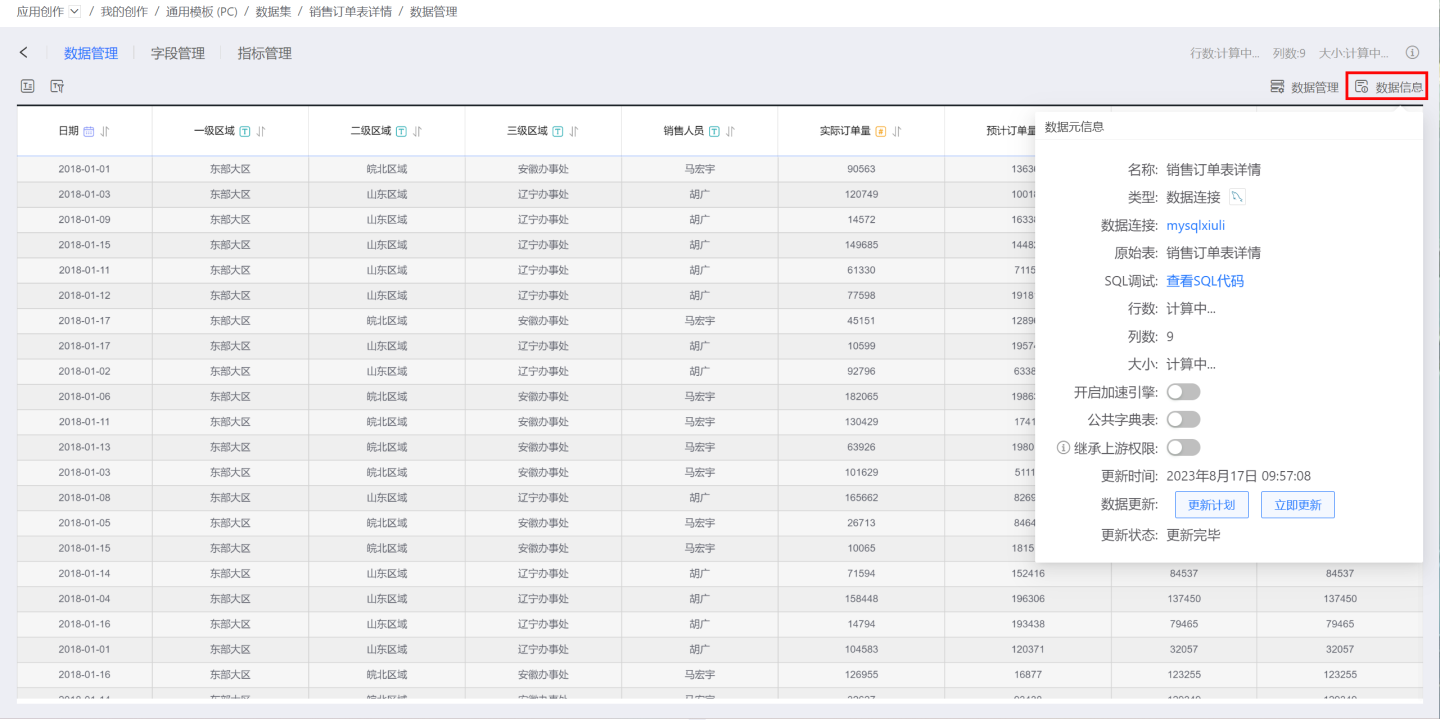
Field Management
Field management mainly involves operations on fields, such as field grouping, creating new fields, and modifying field types. See Field Management for detailed instructions.
Metric Management
Metric management involves operations on dataset metrics, including creating new metrics and grouping metrics. See Metric Management for detailed instructions.